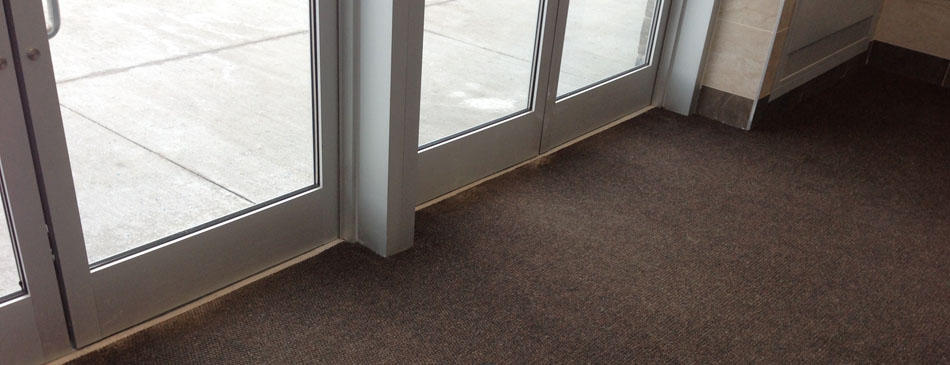The New ANSI/NFSI B101.6 Entranceway Floor Mat Standard
Each year thousands of people are injured as a result of a slip and fall. When entering a building typically the first line of defense for most building owners is to employ the use of entrance carpet matting. Although entranceway matting can play a significant role in preventing accidental slips by removing moisture from pedestrian footwear, they often contribute to trips and falls when buckled, curled, flipped over or improperly installed.
In 2012, ANSI released the latest walkway safety standards. The standard provides criteria for the selection, installation, inspection, and care and maintenance of mats and runners in commercial facilities. The standard is directed to eliminating slip, trip and fall hazards such as soil, moisture, contaminants, and edge treatments as well as the improper use of floor mats and runners.
The standard will likely be adopted by the insurance industry and will serve as an important tool in promoting a proper mat related program.
Key sections of the standard include definitions of terms related to entranceway floor mats such as buckling, curling, ripping are all defined as they apply to entrance matting as well as the different types of mats including Wiper Mats, Wiper-Scrapper Mats, Scraper Mats, recessed well mats and less known types of mats such as Foot Grilles and Tire Tiles.
Section 3 of the standard addresses the mat backings and their ability to prevent movement when placed on the floor. It is recommended that mats have a “High-Traction Backing”.
Mats that do not have a High-Traction backing are more prone to movement which in-turn can increase the risk of migration, buckling, and curling which can contribute to a slip, trip and fall event. A growing number of entrance mat manufacturers have submitted their products to the NFSI (National Floor Safety Institute) for certification. Mats that are NFSI Certified as “High Traction” provide the user the assurance that the mat’s backing provides the highest level of slip resistance.
Section 5 of the standard discusses the proper selection of matting as it relates to their placement and the intended purpose and defines four distinct areas including:
- Outdoor areas
- Vestibules
- Indoor locations
- Other areas.
When matting is located outside a building, mats should either be a recessed mat, a scraper or a wiper-scraper mat which can either be loose laid or permanently installed with a recessed well mat/foot grille. It’s also important to note that the standard states that matting selection for interior vestibules is based on the use of outdoor matting and that when a scrapper mat is used outdoors, then the matting in the vestibule shall be a wiper-scraper or wiper only mat. However, when a scraper mat is not used outdoors, the vestibule matting shall be either scraper only or wiper-scraper. When a scraper is used outdoors, the matting indoors shall be a wiper-scraper or a wiper mat. When no scraper mat is used outdoors, the indoor matting shall both scrape and wipe. Wiper mats shall be the second mat at the entrance.
The standard further discusses the responsibility of the property owner or manager to “identify areas within their facility where there exists a potential hazard for slips, trips and falls and validate the level of potential hazard through the use of B101 standardized wet COF (coefficient of friction) measurements.
The governing factor in determining the adequacy of matting shall be the amount of soil removal. The flooring immediately following the matting shall be examined to confirm that the soil and moisture has been removed. If it hasn’t, either more matting or the proper selection of matting needs to be employed.
A typical 6 foot long entrance mat will only remove 40% of soil and moisture and that it takes approximately 36 feet of matting to remove 99% of soil and moisture. When mats ripple, curl or have torn edges the mats shall be removed from service and replaced with mats that lay flat. Mats shall be installed on a clean, dry floor and that they shall be placed as to not overlap each other.
The amount of matting to remove the soil is not static and fixed. During inclement weather, additional matting should be utilized to supplement the dry weather matting. The use of larger mats whenever possible decreases the likelihood of mat migration due to the greater mass of the larger mats.
Contact Marble Renewal for additional assistance in the sourcing and selecting the right mat for your application.

